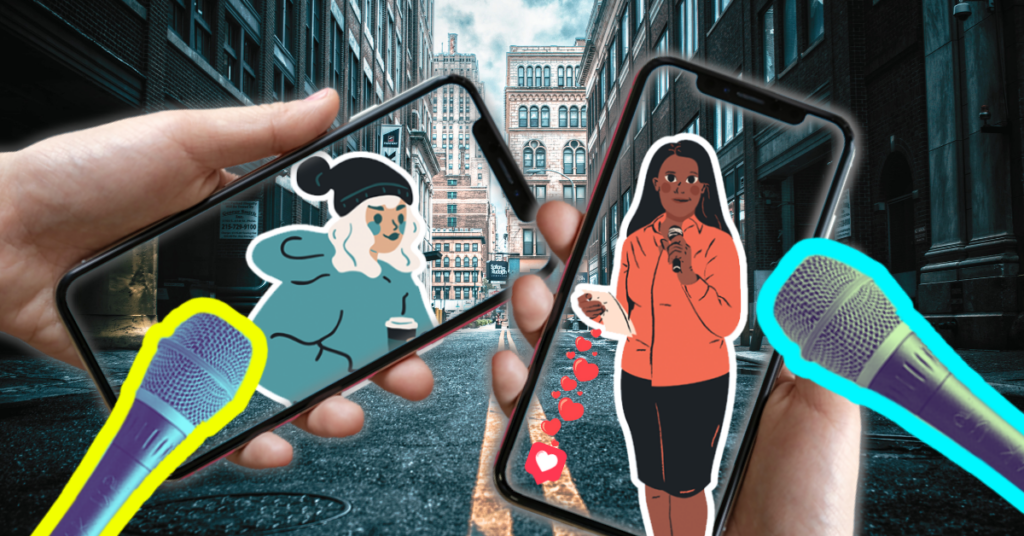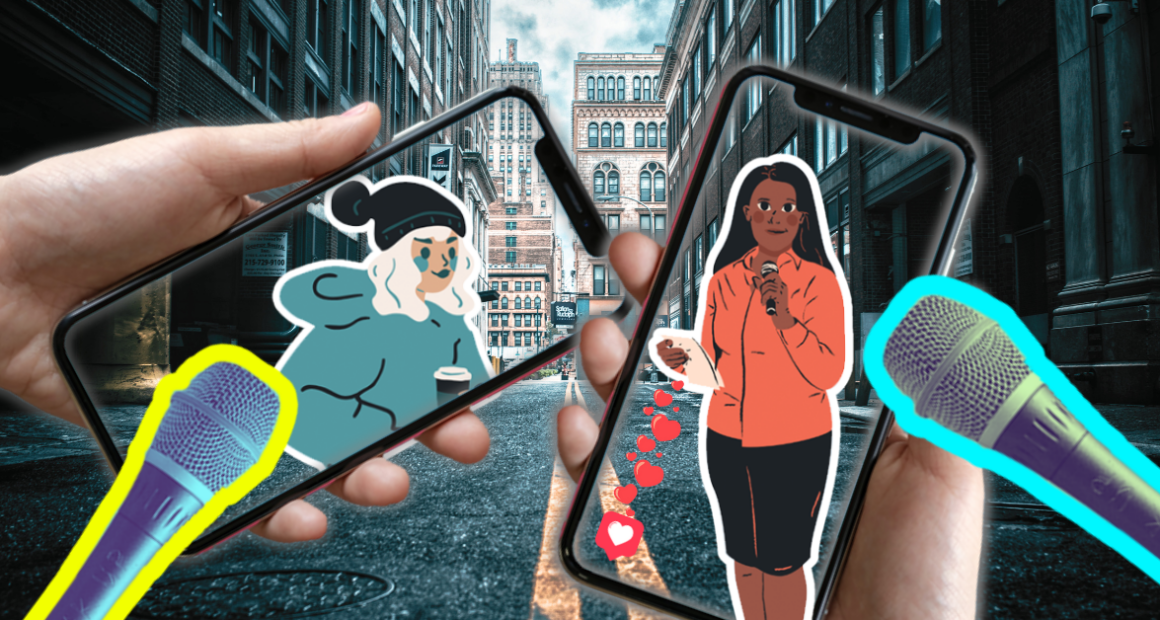The journalism format making waves on social media

It’s a cloudy, overcast day in Regent Park when Olivia Chow is sworn in as Toronto’s mayor. Among the many other Torontonians meandering through the neighbourhood is Maria Sarrouh, armed with a tiny microphone and a camera. She’s been tasked with finding out how city-dwellers feel about the new mayor, and her potential sources are abundant—in fact, they are all around her.
“I don’t know nothing about Mrs. Chow,” replies the first guest, clad in a bright red Bugs Bunny t-shirt. “She could change stuff to make things safer,” says another. Sarrouh is holding the microphone out to a young girl in a white hoodie with a blue butterfly on it. When posed the question, the girl responds, “They actually should be working hard on what they promise, to achieve that goal.”
If you had a dollar for every time you scrolled past a video of someone interviewing an unsuspecting stranger on the street, how much money do you think you might have? Though some content creators find the medium annoying or inappropriate, research shows talking to strangers is good for our mental health and social development, and that the format gives authenticity to media that would otherwise be filtered.
Blurring the Lines of Journalism and Content Creation
Known in the journalism world as a streeter interview, this format has been around since reporters have been able to take their equipment outside. Originally, it was mainly used to get comments from the common folk on community issues like sports or finance. Fast-forward to the twenty-first century and reporters continue to utilize the streeter, but so do content creators—from late-night TV hosts like Jay Leno to social media influencers, many people outside the world of journalism have begun experimenting with streeters. These interviews tend to do well for three reasons—interactivity, authenticity, and curiosity.
Sarrouh, a video journalist at CHCH News, doesn’t know for sure what makes these videos so prone to virality, but she has a couple of hunches. “People love knowing what other people think,” she says, “something about it is human nature.”
Sarrouh says people are simply overwhelmed, and having something broken down by a normal person can make information digestible. “When you get on Instagram or TikTok and you see a random person on the street saying something that you are thinking in such a simple way,it might just make you feel like you understand the topic at hand.”
TikTok influencers have also taken to the format, but Angelyn Francis, Audience and Teams Editor at the Toronto Star, says that, sometimes, these creators are just looking to get some clicks. “There’s definitely some loaded questions being asked,” she says. For example, TikToker Zay Delie posted a video interviewing strangers and asking about their sex lives. “I get disappointed seeing those because you can understand the intention of the person who’s filming the video,” says Francis. “They’re looking for clicks, they’re looking for controversy—I question if they’re looking for humiliation, even.”
Francis says heightened media literacy can help viewers avoid content that is meant to gain clicks rather than be journalistic. “I don’t think we have a monopoly on human connections,” says Francis, “I think it would be cool if people on the street and audiences on TikTok had a lot more media literacy.”
Behind the Scenes of a Streeter
It was during her second year of journalism school that Dana Masa scrolled past one of these videos. At this point, she was essentially a stranger to the format, having minimal experience conducting streeter interviews herself. As she watched, she began to notice that the majority of these shows were taking place in the United States. Absent-mindedly, she sent the video along to a friend, with the message: We should do this.
The friend she forwarded the video to, Sania Ali, became co-founder of Ask Toronto with Masa in 2022. With a handful of rented-out equipment, the pair hit the streets and began building their brand. Now, their TikTok page boasts 44.1k followers and a total of 1.8 million likes.
Sarrouh says journalists just breaking into the streeter format should take their safety seriously. “In those early years, go out with a second person.” When creating streeter content, she advises journalists not to let rejection phase them, and to practice “discretion” when approaching sources. She suggests reading the body language of potential interviewees before initiating a conversation.
For Ali, entering the space as a racialized woman was intimidating, but she didn’t let it stop her. “I would hear from other people and they’d be, ‘Oh, it’s so inspiring how you’re doing this as a visible Muslim,’” says Ali. “Other people can see this and know that’s not something that can hold them back, you know?”
About the author
Hannah Mercanti is a fourth-year undergraduate arts and culture journalist based in Toronto. They are the host of All My Books on Met Radio and the Literary Editor at CanCulture Magazine. When they aren’t writing, you can find them drinking coffee and reading Margaret Atwood books.







